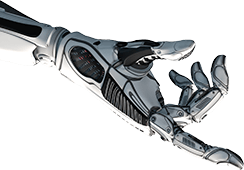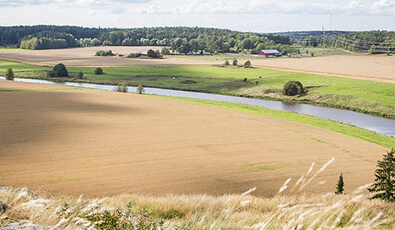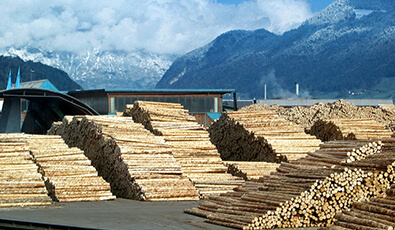

09.08.2018
By Allison VanNest

As teachers, we often have to get creative when it comes to preparing our students for the innovative and forward-thinking career paths they may take in the future. STEAM (Science, Technology, Engineering, Art, and Math) curriculum does just that; it provides kids with opportunities to use their critical thinking skills to be problem solvers and create change.
This back-to-school season, we’ve compiled some tips that you may not have considered to help you bring STEAM learning and familiarity into your classroom quickly and seamlessly.
Hit the books!
For many kids, reading about STEAM might be the perfect introduction to incorporating it into their learning experiences. Below is a list of books that showcase amazing people and projects who look to STEAM activities to invent the world they want to live in. They are sure to inspire.
Ada Twist, Scientist: Ada takes off to discover how the world works through the eyes of a scientist! Also check out Rosie Revere, Engineer and Iggy Peck, Architect.
STEAM Kids: This book provides an ample amount of ideas for students with over 50 projects in STEAM!
Women in Science: Teach your students about all of the incredible women who have created the path to scientific discovery. This is a #1 Best Seller on Amazon!
Amber’s Atoms: Introduce your students to the periodic table with this book! It has rhyming text and gorgeous illustrations to make for a fun and educational read.
Smithsonian Maker Lab: Supporting STEAM education initiatives and the Maker Movement, the National Parenting Publication Award-winner Maker Lab includes 28 kid-safe projects and crafts that will get young inventors’ wheels turning and make science pure fun.
The Secret Subway: This is the incredible story of the visionary engineer who built New York City’s first subway. The Secret Subway is the gripping tale of a man whose vision was years ahead of his time.
Art Lab for Kids: 52 Creative Adventures in Drawing, Painting, Printmaking, Paper, and Mixed Media-For Budding Artists of All Ages.
About Time: A great book for your little Einsteins! This is an engaging exploration of the riddle of time, which examines the consequences of Einstein’s theory of relativity and offers startling suggestions about what recent research may reveal.
Embrace screen time.
You’ve probably read the stats. Kids are increasingly turning to screens for information and entertainment. In fact, kids aged 5 – 16 average 6.5 hours screen time a day, with teenage boys spending the most time on screens – an average of 8 hours a day. Ofcom.org, a communication services research website, reports that 73 percent of kids in this age range are regularly using YouTube.
While the classroom is a great place to encourage hands-on learning, this school year you might consider approaching kids where they have interest by incorporating YouTube into the classroom. Here are some interesting YouTube channels we’ve uncovered!
Vi Hart: Vi narrates on the interesting and mathematical aspects of life. Her videos cover topics from spirals in math to Pi and Anti-Pi. She incorporates science, math, and art!
Make: Workshop: This channel shows everything cool about making and creating things. It even has hands-on projects that you can create with your students.
Design Squad Global: This PBS channel caters to just about every learner’s interests. Videos range from designing cardboard furniture to creating homemade pool heaters!
TinkerLab: This channel has all kinds of short and simple STEAM projects for early elementary age children. Its motto is Tinker, Create, Engineer, and Craft!
Reach out and touch kids with hands-on learning.
Noticing that your class this year is full of kinesthetic learners? Why not incorporate hands-on learning and STEAM activities in the classroom? Activities are a great way to capture kids’ imagination, and here are some resources to help plan in-class activities that will help you cultivate lifelong learners and critical thinkers!
28 Days of Green STEAM Activities: In this blog article, Left Brain Craft Brain explores 28 days of fun-packed STEAM activities for children. The emphasis for these activities is the “green” aspect. Our future innovators have to keep our Earth clean and healthy and these activities do a great job of exploring that!
Craft Stick Marble Run: We’ve all played with marble runs as children, but did we ever create one ourselves? With this craft students get to challenge their spatial skills with marbles, craft sticks, and cardboard boxes!
Shadow Art Outdoor STEAM: In this activity students get to tap into their creative juices using chalk and the sun! An added benefit to this activity is the opportunity to jump around, flex some muscles, and exercise outside.
For more ideas, be sure to check out these 52 STEAM Challenges for Creative Kids!

The world is changing fast, and while we don’t always have the tools we need to incorporate STEAM-based lessons into our classrooms, there are ways we can expose students to the topic in new ways to capture their imaginations.
No matter how you decide to incorporate STEAM into your classroom this year, we hope that this list has provided some new insights to help you take the first step. For more resources and inspiration, visit www.littleBits.com/education.



